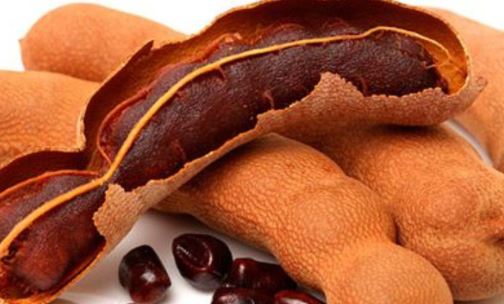Application of tamarind pulp for wine production
DOI:
https://doi.org/10.20873/jbb.uft.cemaf.v9n2.maldonaroPalabras clave:
tropical fruits, insoluble solids, pH, wine productionResumen
Tamarind (Tamarindus indica L.) is a nutrient-rich fruit that has an acid and exotic flavor. It is widely consumed in natura at tropical countries such as India and Brazil. The aim of this study was to evaluate the application of tamarind as a substrate for the production of tamarind wine. The pulp from ripe fruits was used to produce wine in three different proceedings: (1) whole pulp, (2) pulp without insoluble solids and (3) pulp without insoluble solids and pH adjusted to 4.5. In all cases, the fermentation was performed with Saccharomyces cerevisiae yeast and the initial concentration of soluble solids adjusted to 25 °Brix. The wine with the highest alcohol content (10.2 °GL) was obtained after 11 days of fermentation at room temperature (~25 °C). The alcohol content increased in 2.5 times with the removal of insoluble solids, and the pH correction contributed to an additional increase of 10%. The study demonstrated that tamarind presents good potential as a substrate for the production of wines, which can be an alternative to improve the utilization of the fruit.
Citas
Alessio MV, Hoffmann PH, Carneiro, S M. Método rápido para extração de DNA de Puccinia kuehnii. Summa Phyto-pathologica, v.39, n.3, p.198- 200, 2013. https://doi.org/10.1590/S0100-54052013000300009
Allinger NL, Cava MP, Jongh DC, Johson CR, Libel NA, Stevens CL. Organic Chemistry. Rio de Janeiro: LTC Publi-sher Company, 656p. 1978.
Andrade MB, Perim GA, Santos TRT, Marques RG. Fermen-tação e caracterização de fermentado de morango. BBR- Bi-ochemistry and Biotechnology Reports, v.2, p.265-268, 2013. doi: http://dx.doi.org/10.5433/2316-5200.2013v2n3espp265
Aquarone E. General information on alcoholic beverages. In: Aquarone E, Lima UA, Borzani W. Biotechnology – Food and beverages produced by fermentation. São Paulo: Edgard Blücher Publisher Company, pp.1-10, 2001.
Asquieri ER, Candido MA, Damiani C, Assis EM. Fabrica-ción de vino blanco y tinto de jabuticaba (Myrciaria jaboti-caba Berg) utilizando la pulpa y la cáscara respectivamente. Alimentaria, v.355, p.97-109, 2004.
Augusta IM, Resende JM, Borges SV, Maia MCA, Couto MAPG. 2010. Caracterização física e química da casca e polpa de jambo vermelho (Syzygium malaccensis (L.) Mer-ryl & Perry). Food Science and Technology, v.30, n.4, p.928-932.
Brazil. Brazilian Ministry of Agriculture, Livestock and Sup-ply. Law n. 10970, 12 Sep 2004. http://www.agricultura.gov.br. Accessed on 02 Jan 2020.
da Silva Pereira A, da Silva Costa RA, Landim LB, da Silva NMC, Reis MFT. Produção de fermentado alcoólico misto de polpa de açaí e cupuaçu: aspectos cinéticos, físico-químicos e sensoriais. Revista Brasileira de Tecnologia Agroindustrial, v. 8, p. 1216-1226, 2014.
de Paula Valim F, Aguiar-Oliveira E, Kamimura ES, Alves VD, Maldonado RR. Production of star fruit alcoholic fer-mented beverage. Indian Journal of Microbiology, v.56, p.476-481, 2016. https://doi: 10.1007/s12088-016-0601-9
FAO/OMS. Human Vitamin and Mineral Requirements. In: Report 7th Joint FAO/OMS Expert Consultation. Bangcoc, Thailand, 2001.
Ferreira RMA, Aroucha EMM, Góis VA, da Silva DK, de Sousa CMG. Sensorial quality of mixed jelly of watermelon and tamarind. Revista Caatinga, v.24, p.206, 2011.
IAL. Adolfo Lutz Institute. Analytical Standards of the Adolfo Lutz Institute. Imesp Publisher Company, São Paulo, BR, 2005. Accessed on 02 Jan 2020. http://www.ial.sp.gov.br
Mbaeyi-Nwaoha IE, Ajumobi CN. Production and microbial evaluation of table wine from tamarind (Tamarindus indica) and soursop (Annona muricata). Journal of Food Science and Technology, v.52, p.105-116, 2015. doi: https://doi.org/10.1007/s13197-013-0972-4
Muniz CR, Borges MDF, de Abreu FAP, Nassu RT, de Freitas CAS. Bebidas fermentadas de frutas tropicais. Bole-tim do Centro de Pesquisa de Processamento de Alimentos, v.20, p.309-322, 2002.
Muzaffar K, Kumar P. Parameter optimization for spray drying of tamarind pulp using response surface methodology. Powder Technology, v.279, p.179-184, 2015. doi: https://doi.org/10.1016/j.powtec.2015.04.010
Paludo N. Efeito de diferentes enzimas para extração de cor, compostos bioativos e rendimento de suco de uva. In: XXVII Salão de Iniciação Científica da UFRGS, Porto Ale-gre, 2015.
Silva ASA, Gurjão KD, Almeida FDC, Bruno RDLA, Pereira WE. Dehydration of tamarind pulp through the foam-mat drying method. Ciência e Agrotecnologia, v.32, p.1899-1905, 2008. doi: https://doi.org/10.1590/S1413-70542008000600032
Silva MTM, Oliveira JDS, Jales KA. Physico-chemical quality evaluation of frozen fruit pulps commercialized in the Ceará-Brazil. In: Congress Proceedings of V CONNEPI. Maceió, Alagoas, Brazil, 2010.
TACO. Brazilian Table of Food Composition (TACO). 4th ed., NEPA-UNICAMP, Campinas, São Paulo, BR, 2011. Ac-cessed on 02 Jan 2020. http://www.unicamp.br/nepa/taco/

Descargas
Publicado
Cómo citar
Número
Sección
Licencia
Copyright (c) 2024 - Journal of Biotechnology and Biodiversity

Esta obra está bajo una Licencia Creative Commons Atribución 4.0 Internacional.
Los autores que publican en esta revista aceptan los siguientes términos:
Los autores mantienen los derechos autorales y conceden a la revista el derecho de primera publicación, con el trabajo simultáneamente licenciado bajo la LicenciaCreative Commons Attribution (CC BY 4.0 en el link http://creativecommons.org/licenses/by/4.0/) que permite compartir el trabajo con reconocimiento de la autoría y publicación inicial en esta revista.
Los autores tienen autorización para asumir contratos adicionales separadamente, para distribución no exclusiva de la versión del trabajo publicado en esta revista (ej.: publicar en repositorio institucional o como capítulo de libro), con reconocimiento de autoría y publicación inicial en esta revista.
A los autores se les permite, y son estimulados, a publicar y distribuir su trabajo online (ej.: en repositorios institucionales o en su página personal) en cualquier punto antes o durante el proceso editorial, ya que esto puede generar alteraciones productivas, bien como aumentar el impacto y la citación del trabajo publicado (disponible en El Efecto del Acceso Libre en el link http://opcit.eprints.org/oacitation-biblio.html).


